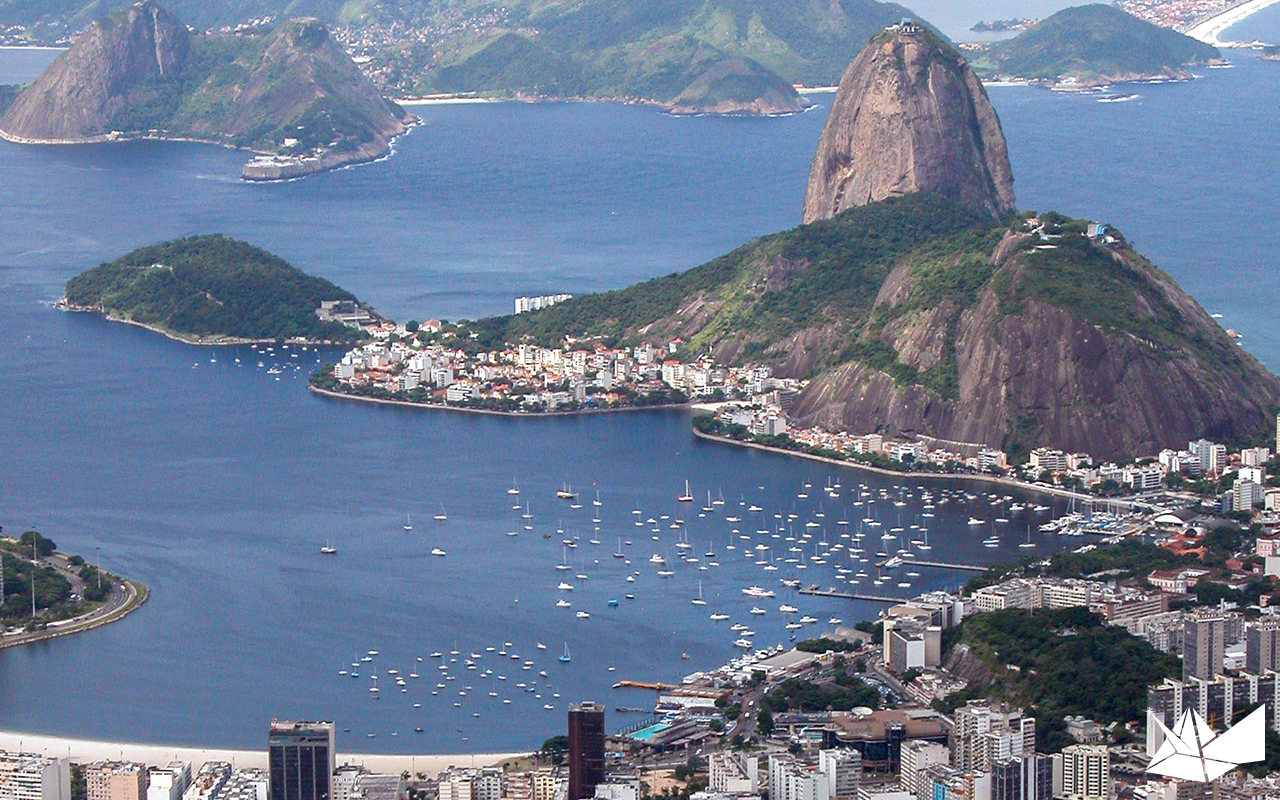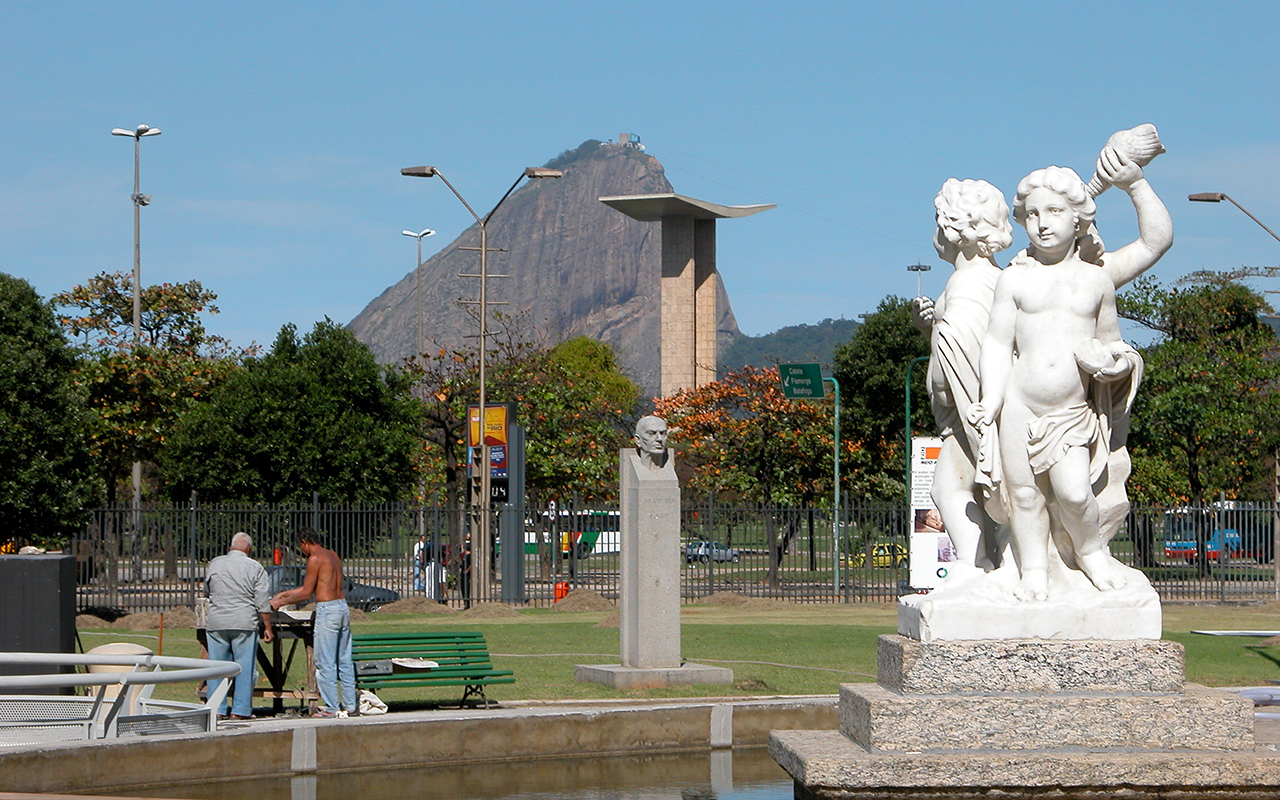Rio de Janeiro Main Attractions
As we understand your time may be limited, we took the liberty of picking out the main attractions. Mix these ingredients to your taste, and create your recipe for Rio de Janeiro as your travel destination. Take advantage of the possibilities and include cultural attractions with outdoor activities, parties, and seasonal events!
Two Iconic Overlooks

Do not even try to pretend you’ve never heard of the Corcovado. That is the tall mountain topped by the Art Deco statue of Christ the Redeemer. It is one of the most iconic symbols in the world, a favorite in catastrophe movies.
The peaceful open-arms posture speaks volumes about how the city will treat you. There’s a quaint train ride uphill, and once you arrive, you are astonished by a view that never quits. Take your time.

The Sugarloaf was named after a cone-shaped sweet Portuguese loaf popular in colonial Brazil. Baking molds are in museums. The trip uphill is on a cable car with panoramic windows.
Your first stop is Morro da Urca. In addition to the view, a large entertainment area has hosted unforgettable Carnaval balls, music shows, parties, and other events. The second cable car lands you on top of the Sugarloaf, and the overlook is breathtaking.
Historical Rio de Janeiro
Rio has a fascinating history dating back to the early XVI century when Portuguese sailors discovered Guanabara Bay. A peculiarity happened in 1808. Portuguese royals moved from Liston to Rio to avoid “interacting” with Napoleon.
The city underwent a makeover as the capital of the United Kingdom of Portugal, Brazil, and the Algarve.
Cultural institutions started to blossom. The city expanded along Guanabara Bay, and you can visit colonial parks, palaces, churches, convents, museums, and cultural institutions.
Old Rio is easy to explore by subway. We picked out three different areas that combine many main attractions. There are also excellent restaurants.

Cinelândia
In Centro, main attractions are often clustered around squares or parks. If you visit Cinelândia, for instance, you may start your tour at Passeio Público. It was the first public park in Rio de Janeiro. Among the attractions are sculptures by legendary Mestre Valentin, a Brazilian master.
Enjoy the view of Guanabara Bay, Flamengo Park, and the Sugarloaf. Theatro Municipal, a gem founded in 1909, is open for performances and guided visits. Cross the street to visit the Museum of Fine Arts or the historical Bibliotheca Municipal.

Praça Mauá
A lovely area to explore is Praça Mauá. Start at Museu da Marinha or visit the lovely Ilha Fiscal. Flamboyant Museu do Amanhã and Museu de Arte do Rio are new and welcome additions. A tram takes you through the old dock warehouses that gained a new life with colorful murals.
AquaRio, the saltwater aquarium, allows you to walk surrounded by sea creatures of all sizes. There’s also a giant Ferris wheel. You are within walking distance of Pedra do Sal and Little Africa, where Samba was born.

Lapa
With the iconic arches, Lapa is another area in Centro to add to your must-see list. The old aqueduct supports the tram line to historical Santa Teresa. Go up the steps of Escadaria Selarón. Circo Voador and Fundição Progresso are favorite cultural centers open for weekend shows and parties.
With reinforced concrete, the Metropolitan Cathedral and the Petrobrás building break the illusion that you are in the past. Lapa is well-known for its colorful nightlife. There are live music venues and good restaurants.
Where's the Beach?
With rolling hills and beaches shaping its geography, the Mata Atlântica forest is an open invitation for hikers. Trails lead to views of stunning beaches, waterfalls, and even a hang glider ramp.
The beaches are an attraction apart. In addition to beach tennis, volleyball, footvolley, dodgeball, soccer, ‘altinho,’ surfing, kitesurfing, windsurfing, kayaking, people-watching, and so many other things to do, they come in all flavors.
Beach bays are lovely yet not suitable for swimming. Ocean beaches start at Praia Vermelha in Urca and go all the way to Grumari and beyond. Some of the famous stars like Copacabana and Ipanema are must-sees. Stop by the gay beach!
From there, you can proceed to São Conrado, Joatinga, Pepê, Barra da Tijuca, Reserva, Macumba, Prainha, Grumari, and nudist Praia do Abricó, to name a few.
Parks, Lakes & Nature
We mentioned trails for hikers, yet green parks are accessible, plentiful, and diverse. The Botanical Garden and Parque Lage are near the Jockey Club around Lagoa. This is a short ride from your hotel, and you could easily spend a whole day recharging your energy surrounded by nature.
On the west side, there’s Parque Chico Mendes, which preserves the lagoon ecosystem. This is where you have the most chances of running into an alligator within the city perimeter. Sítio do Burle Marx, where the landscape designer lived, is another green park you cannot miss.
Four Seasons of Love
Winter, spring, and fall are great choices unless you want to enjoy the city during the high season. Beaches are way less crowded on weekdays, and it hardly ever gets cold in the true sense of the word.
Winter vacation occurs in July, the busiest off-season month. Mother Nature determines the weather, and Rio can be subject to tropical rainstorms in any season.
Rio can be very hot in the summer, hotel rates may be a bit higher, and loads of people will compromise your square footage at the beach. The city is crowded with visitors from all parts of Brazil and abroad.
Additionally, the Carnival season lasts almost an entire month. Street parties happen all over the city. If this sounds like fun, and it should, you have made your choice.
